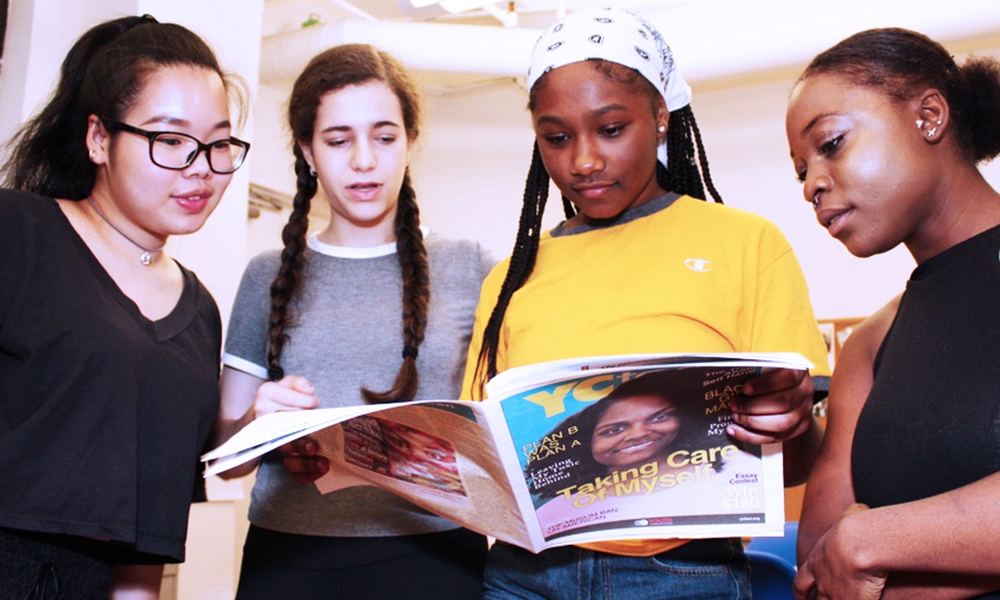
Photos by Youth Communication
Winnie Kong, Salenna Weiner, Demetria Mack, Abigail Johnson (all teen writers)
Desiree Moore, 28, was taken from her home by the Administration for Children’s Services in New York City when she was 17 and put into foster care.
She had suffered physical and emotional abuse at home, but being taken away left her feeling isolated and suicidal.
A social worker gave her a copy of a magazine, Represent, written by kids in foster care.
“I read the magazine from front to back,” Moore said.
It was the first time she realized that other people had experiences like hers.
After reading it, “I didn’t feel alone,” she said. One article was about going forward despite obstacles.
“It was pretty life-changing,” she said. “It broke my silence.”
Moore went on to become an advocate for youth in the New York State organization Youth Power and today works for Camfel Productions, which creates and presents multimedia productions for schools.
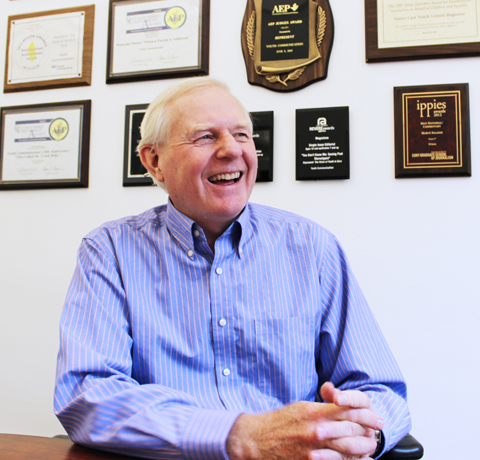
Keith Hefner
And Represent magazine is going strong. It’s published by Youth Communication, a New York City nonprofit founded by Keith Hefner in 1980 that publishes youth-written stories in YCTeen and a number of anthologies. The stories by young people provide insight for youth workers, teachers and counselors across the city. Youth Communication now focuses on training these professionals to use the stories in their own work with youth.
“The stories are meant to be used in groups anywhere an adult is working with young people,” Hefner said. They fit really well in out-of-school time, he said.
He founded Youth Communication with the belief that young people often know things adults don’t know or aren’t willing to face, and that to tell a story accurately, you may have to tell it yourself.
Stories of struggle
The stories written at Youth Communication are created in a rigorous writing program serving about 50 teens a year ages 15-19. The writers have had real struggle in their lives, Hefner said.
About half are in foster care; others may be homeless, in the juvenile justice system or be recent immigrants to the United States, he said.
Tayia Day began writing at Youth Communications in November 2017. She’d go to the office on Mondays and Wednesdays from 3 to 6 p.m.
“I wanted to write about everything that was going on between me and my mom,” she said.
She began by reading the stories other young people had written for Represent. She worked with editor Virginia Vitzthum, who taught her how to edit. Vitzthum would leave questions in the text, Day said, such as “What does this mean?” “Add details here” and “Tell me more”
Day’s story begins: “One day when I was 10, there was a ring at the door of my grandma’s house.”
She described the strangeness of being taken away suddenly.
“Nobody explained to me what was going on. I found out later that ACS said my mom had neglected us because she let us stay at her mother’s dirty house,” she wrote.
As she looked back at a series of foster homes, she realized what might have helped her and she devised some innovative solutions. For example, she suggested holding classes for young people in foster care to help them meet others and develop friendships in a safe environment.
Since then she’s interviewed other youth and is working on her fifth story.
“I felt I actually became a better person” as a result of writing, she said. “Writing has the potential to [let you] see things from a different point of view.”
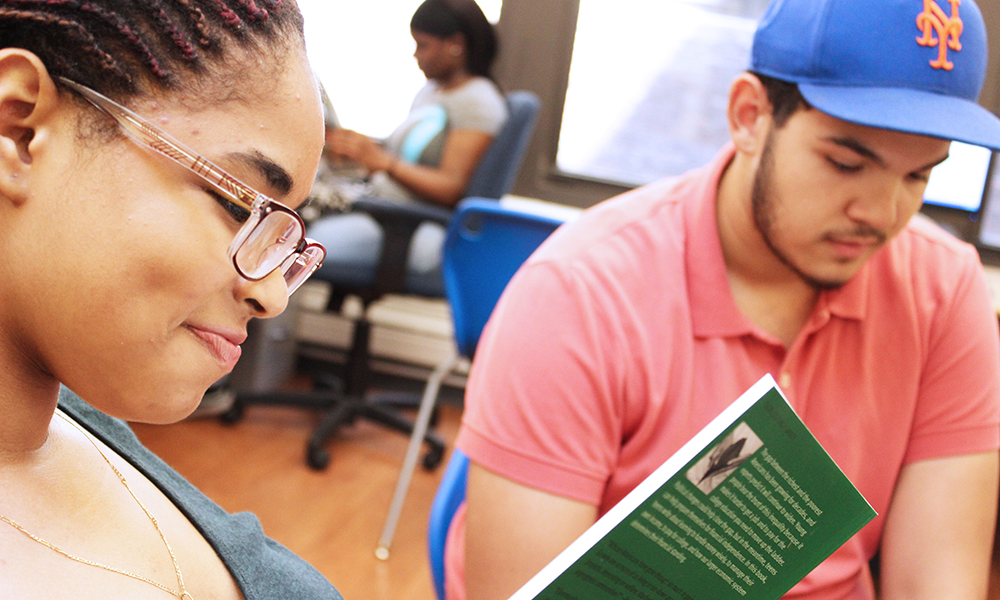
Jaelyn Feliciano, Victor Marrero (teen writers)
Long List of Alumni
Since 1980, more than 2,500 young people have gone through the writing program at Youth Communication, according to the organization. Alumni include novelist Edwidge Danticat, New York Times reporter Rachel Swarms and Urban Justice Center Staff Attorney David Miranda.
In 1989, Hefner was awarded a MacArthur “genius grant.” Over the years, he’s been influential in supporting other youth-led media.
For example, he provided assistance in the early 1990s when Rachel Wallack was founding Vox ATL, a nonprofit teen publishing organization in Atlanta.
“He gave me a starting place with all kinds of best practices,” said Wallack a former editor at Youth Today.
In recent years, Youth Communications has focused on reaching youth by providing training and curricula for youth workers, teachers and other professionals.
A process for working with youth
The process of working with teens at Youth Communication is a trauma-informed one, Hefner said in a phone conference in February sponsored by the Forum for Youth Investment.
As the writers begin, Youth Communication elicits important experiences in the their lives, he said in the conference.
Young people work collaboratively with an adult in a safe space, he said. They develop an increasing sense of control as they reframe the narrative of their experience, he said.
A story may take 10 to 15 drafts, he said.
Early drafts often focus on “venting and lamenting,” he said in a later interview. Then comes the exposition, the explaining of their experience.
Stories are shaped as a progression from problem to struggle to resolution. Stories end with what the young person did in response to the challenge he or she faced.
After the writing is done, a young person is better equipped to handle trauma, Hefner said. The writer has also produced an artifact showing how he or she dealt with a challenge, making the writer’s way of managing a problem accessible to others, he said.
Adults may realize: “Oh, this is how young people respond to trauma,” he said. Adults also see the strengths of young people in the stories, he said.
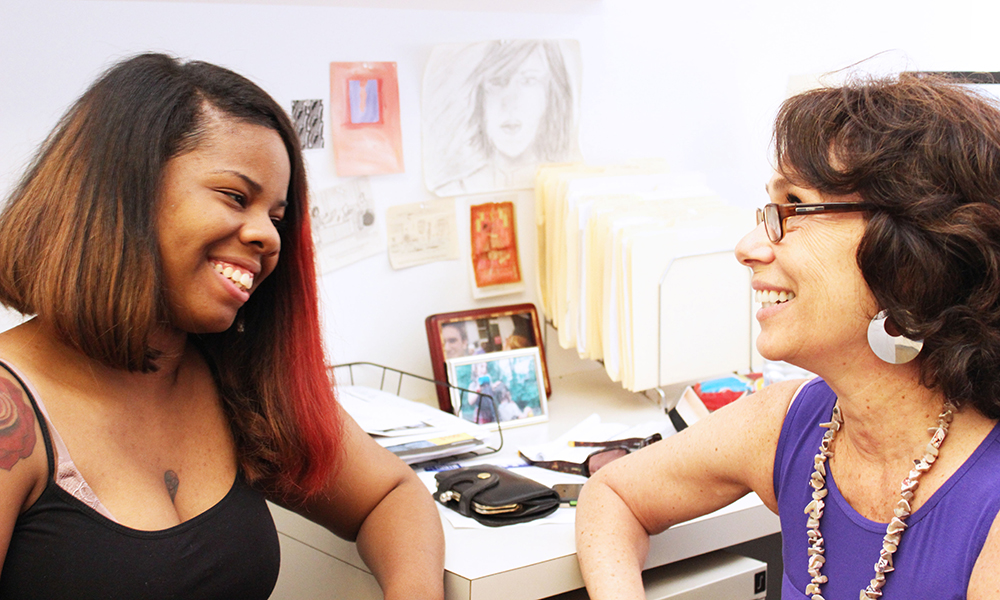
Eunisah Burke (teen writer) and Holly St. Lifer, editor of YCteen magazine
What adults can gain
The stories are a tool for adults to help young people develop social and emotional skills, Hefner said. Adults are much more effective if they understand young people through young people’s eyes, he said.
“When a young person acts out in front of you, it’s really easy to just blame them,” he said. But the stories help adults see the causes of behavior.
Youth Communication trainings leave teachers or youth workers energized, Hefner said. “It changes the dynamics.”
“They say: ‘This reminds me why I went into this work,” he said.
Among other professionals, Youth Communication has trained 40 New York City juvenile probation officers in using story-writing with youth, Hefner said.
It offers five programs to youth workers and other professionals in the New York area:
— SEL for middle-school students
— SEL for high school students
— Career readiness
— Girls’ empowerment
— Positive masculinity
Youth Communication is also beginning to expand its geographic reach, working in six sites with Horizons National, which offers academic enrichment and summer learning to low-income students in 18 states.
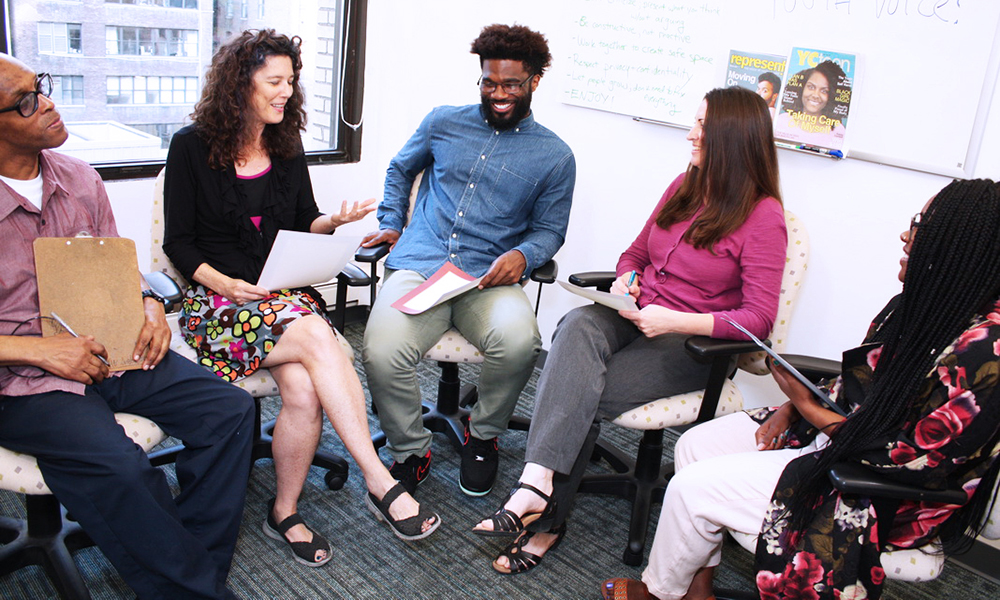
Educators in a professional development workshop
‘I realized I wasn’t necessarily the problem’
Aleesha Muhammad is an 18-year-old who recently finished her first story for Youth Communication.
She grew up in 20 foster homes, she said. She had settled into one home which felt right for her and her foster mother died. A family friend is now her foster parent, she said.
She learned about Represent magazine through a foster sister, and then the foster care agency suggested she consider writing for it.
“I’m not going to lie. The process is pretty intense,” Muhammad said.
She was shy and found it hard to speak up, but “it became easier over time,” she said.
“My first story was about being in an abusive relationship with an older man,” she said.
At age 14, she walked into a store and met a man who was very friendly with her. A year later “we had a long conversation,” she said.
“He was very manipulative,” Muhammad said, but she did not see it at the time. He was 32 and a drug dealer, she said.
“He opened me up to that world,” she said, and she became involved in drugs. She realizes that not having a father who had cared for her made her more susceptible to the man’s overtures.
A mentor helped her “clean herself up.” she said, and she was able to see the man more clearly.
“Part of me still believes he was a good guy,” she said.
“After writing the story I realized I wasn’t necessarily the problem,” she said. “I had to pick myself up and find myself. I had to learn my worth.”





























